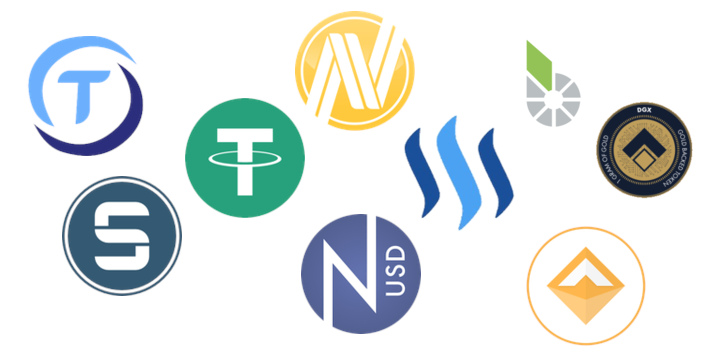When we talk about cryptocurrencies, Bitcoin and Ethereum come to most people’s minds, which passes onto Decentralize and Open finance. But this should not be the case since I don’t see in any foreseeable future using BTC or ETH as fiat currency for many reasons that I will have to explain in another post. The main driver of these movements is stablecoins. Now, if you are new to this, I will make a brief definition of stablecoins. As always, I won’t give just one purpose since this is a new market and things change all the time.
According to Investopedia, the definition is:
“A stablecoin is a new class of cryptocurrencies that attempts to offer price stability and are backed by a reserve asset. Stablecoins have gained traction as they attempt to offer the best of both worlds—the instant processing and security or privacy of payments of cryptocurrencies, and the volatility-free stable valuations of fiat currencies.”
Coindesk says the following:
“A “stablecoin” is a type of cryptocurrency whose value is tied to an outside asset, such as the U.S. dollar or gold, to stabilize the price.”
Coingecko says:
“Stablecoins are designed to mimic commodity assets or fiat currency while existing as a cryptocurrency. Examples include gold-backed cryptocurrency or fiat-pegged cryptocurrency.”
Now, if you are more visual, here are some videos that explain it.
Most of the coins are ERC-20 which are mostly ethereum based tokens and many versions of such as:
Fiat-Collateralized
Seeing as most stablecoins are currently pegged to the US dollar, it’s logical that the large majority of projects have decided to use US legal tender as the source of collateral for the issuance of their tokens. Fiat-collateralized stablecoins retain their 1:1 peg by utilizing trusted third parties to hold an equivalent amount of legal tender reserves. New stablecoins are minted when a party deposits USD into the issuer’s reserve. Similarly, when a redemption request is made, the issuer will send the buyer USD and burn the redeemed stablecoin.
Crypto-Collateralized
Having explained what it is, you can understand by the stability of these types of cryptocurrencies; you can see that this is the lifeblood of Defi. As much as we want to hold and buy bitcoin, it would not be wise to borrow bitcoin due to its volatility, but it would be a clever idea to borrow fiat while still holding your crypto assets as collateral. This is what makes decentralize and open finance great, the fact that you can use your crypto in many ways and use it to borrow, lend and gain high yields with very low to no fees.
Algorithmic Stablecoins
These coins aim to maintain a peg by dynamically controlling the supply and demand of the stablecoin by the protocol. The protocol acts as the “central bank”,increasing supply when the token shows a deflationary tendency, and reducing it when thethe purchasing power of the stablecoin drop
Hybrid Stablecoin
Is two or more of the crypto categories (Fiat, Crypto, or Metal Collateralized and Algorithmic Stablecoin Model) applied to one token. Hybrid StableCoin Models hold value partly being both an asset and algorithmic modeling.
Metal Stablecoins
These mimic and are backed by precious metals such as gold and silver and go by the price of each. Some of these are fully license in some countries, and you can redeem them for the tangible asset.
Now, as this progresses, it would be very hard just to do this with speculative assets, but it’s really simple when you have a currency that everyone uses, and it can be transferred to legacy financial systems if necessary, and therefore stablecoins are the necessary currency for this.
As the government starts adopting blockchain a digital finance is only a matter of time till they move to a central bank digital currency (CBDC); with this type of currency gives the ability of central banks to issue currency digitally so imagine getting paid from your phone’s digital wallet without needing a bank account. Countries like China and the Bahamas are already adopting this; although this will take time, all countries explore a digital version of their currency.
For now we have to stick with coins such as Tether, USDC, and BUSD, to name a few. But the reality is that the type of stablecoins that are out right now are administered by private companies that some we have very few to no information at all. This is high risk since any time there could be a crackdown by authorities (especially in the United States), and your stablecoins could be worth nothing, the probability of this is low. However, there still a chance as this technology comes closer to primary adoption and regulation. For now, stablecoin is the main driver for defi, and it will continue that as mass adoption, and more applications get built. We could soon see our money working for by saving, investing, lending, etc.. while we are using it on a day-to-day basis, this is the primary purpose of defi and its part of its appeal. While we wait for this, let’s keep learning and see what comes up next.



















Leave a Reply